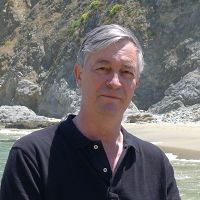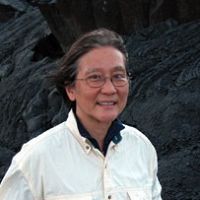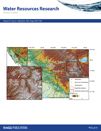Kim et al., 2017
Controls on solute concentration-discharge relationships revealed by simultaneous hydrochemistry observations of hillslope runoff and stream flow: The importance of critical zone structure
Kim, Hyojin, William E. Dietrich, Benjamin M. Thurnhoffer, Jim K. B. Bishop, and Inez Y. Fung (2017)
Water Resources Research, 53:1424-1443 Cross-CZO
-
Luquillo, Shale Hills, INVESTIGATOR
-
Eel, INVESTIGATOR
-
Eel, GRAD STUDENT
-
Eel, INVESTIGATOR
-
Eel, INVESTIGATOR
Abstract
We investigated controls on concentration-discharge relationships of a catchment underlain by argillite by monitoring both groundwater along a hillslope transect and stream chemistry. Samples were collected at 1–3 day intervals over 4 years (2009–2013) in Elder Creek in the Eel River Critical Zone Observatory in California. Runoff at our study hillslope is driven by vadose zone flux through deeply weathered argillite (5–25 m thick) to a perched, seasonally dynamic groundwater that then drains to Elder Creek. Low flow derives from the slowly draining deepest perched groundwater that reaches equilibrium between primary and secondary minerals and saturation with calcite under high subsurface pCO2. Arriving winter rains pass through the thick vadose zone, where they rapidly acquire solutes via cation exchange reactions (driven by high pCO2), and then recharge the groundwater that delivers runoff to the stream. These new waters displayed lower solute concentrations than the deep groundwater by less than a factor of 5 (except for Ca). Up to 74% of the total annual solute flux is derived from the vadose zone. The deep groundwater’s Ca concentration decreased as it exfiltrates to the stream due to CO2 degassing and this Ca loss is equivalent of 30% of the total chemical weathering flux of Elder Creek. The thick vadose zone in weathered bedrock and the perched groundwater on underlying fresh bedrock result in two distinct processes that lead to the relatively invariant (chemostatic) concentration-discharge behavior. The processes controlling solute chemistry are not evident from stream chemistry and runoff analysis alone.
Citation
Kim, Hyojin, William E. Dietrich, Benjamin M. Thurnhoffer, Jim K. B. Bishop, and Inez Y. Fung (2017): Controls on solute concentration-discharge relationships revealed by simultaneous hydrochemistry observations of hillslope runoff and stream flow: The importance of critical zone structure. Water Resources Research, 53:1424-1443. DOI: 10.1002/2016WR019722
 This Paper/Book acknowledges NSF CZO grant support.
This Paper/Book acknowledges NSF CZO grant support.
Explore Further






